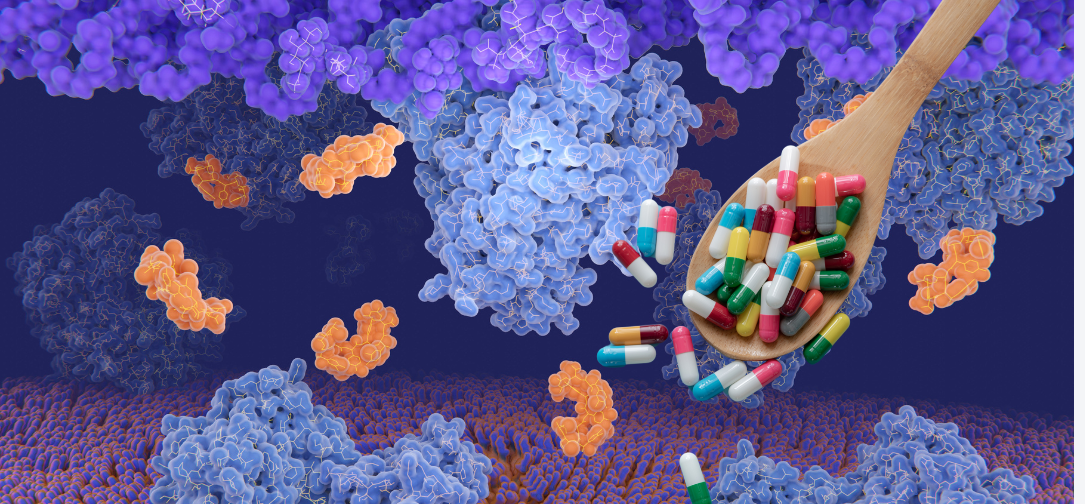Public Health
Antibiotic Resistance: How We Got Here and What We Can Do

Antibiotic resistance is one of the most pressing health challenges of the 21st century, representing a global threat to public health, food security, and development. Once hailed as miracle drugs that transformed medicine and saved countless lives, antibiotics are now facing a crisis. The rise of antibiotic resistance means that common infections are becoming increasingly difficult, and sometimes impossible, to treat. This article will explore the history of antibiotics, the factors that have contributed to resistance, the impact of this phenomenon on global health, and the strategies we can adopt to combat it.
The Discovery and Impact of Antibiotics
The discovery of antibiotics was a landmark event in medical history. Before their advent, infections such as pneumonia, tuberculosis, and syphilis often resulted in death or severe complications. The modern era of antibiotics began in 1928 with Alexander Fleming’s discovery of penicillin, a naturally occurring mold that killed bacteria. By the 1940s, penicillin was mass-produced and became widely available, revolutionizing the treatment of bacterial infections.
Antibiotics rapidly became a cornerstone of modern medicine, saving millions of lives. They were used not only to treat infections but also to prevent them during surgeries and other medical procedures, significantly reducing mortality rates. Antibiotics also played a crucial role in advancing other medical fields, such as cancer treatment and organ transplantation, where infection prevention is vital.
The Evolution of Antibiotic Resistance
However, almost as soon as antibiotics were introduced, bacteria began developing resistance to them. Resistance occurs naturally as bacteria mutate and evolve. When exposed to antibiotics, most bacteria are killed, but some with natural resistance may survive. These resistant bacteria can then multiply, passing on their resistant traits. Over time, and with repeated and widespread use of antibiotics, this process accelerates.
By the late 1940s, resistant strains of bacteria such as Staphylococcus aureus had already emerged, demonstrating that the problem was not hypothetical but a real and growing concern. Despite warnings from scientists like Fleming, who cautioned in his Nobel Prize acceptance speech in 1945 about the misuse of antibiotics leading to resistance, the problem continued to escalate.
Key Drivers of Antibiotic Resistance
Several factors have contributed to the rapid rise of antibiotic resistance, turning it from a manageable issue into a global crisis:
1) Overuse and Misuse of Antibiotics in Humans: Antibiotics are often prescribed unnecessarily for viral infections like the common cold or flu, where they are ineffective. In some cases, patients demand antibiotics even when they are not needed, and doctors, under pressure, may comply. Inappropriate prescriptions and incorrect doses also play a role in fostering resistance.
2) Agricultural Practices: A significant amount of global antibiotic use occurs in agriculture. Antibiotics are routinely administered to livestock not only to treat and prevent infections but also to promote growth. This practice, particularly in factory farming, has been a significant contributor to the development of antibiotic-resistant bacteria. These bacteria can spread from animals to humans through the food chain, direct contact, or the environment.
3) Poor Infection Control and Hygiene Practices: In healthcare settings, inadequate infection control measures can spread resistant bacteria. This includes poor hand hygiene, insufficient sterilization of medical equipment, and overcrowding. Outside of hospitals, improper sanitation, especially in low-resource settings, facilitates the spread of resistant bacteria in the community.
4) Lack of Rapid Diagnostics: The lack of rapid diagnostic tools often results in the prescription of broad-spectrum antibiotics without knowing the specific causative agent. This “shotgun approach” increases the likelihood of fostering resistance. Rapid, accurate diagnostic tests could reduce the unnecessary use of antibiotics by helping clinicians target specific pathogens.
5) Insufficient New Antibiotic Development: The pipeline for new antibiotics has been slow and underfunded. The high cost and complexity of developing new drugs, combined with lower financial returns compared to medications for chronic diseases, have deterred pharmaceutical companies from investing in antibiotic research and development. As a result, the supply of new antibiotics is dwindling, and the bacteria continue to outpace the drugs.
The Impact of Antibiotic Resistance
The consequences of antibiotic resistance are far-reaching and severe. According to the World Health Organization (WHO), antibiotic resistance is one of humanity’s top ten global public health threats. The impacts are felt across various dimensions:
1) Increased Mortality and Morbidity: Infections caused by resistant bacteria are more challenging to treat and often require extended hospital stays, expensive drugs, and intensive care. Standard procedures and surgeries that rely on effective antibiotic prophylaxis, such as C-sections or joint replacements, become riskier. The estimated global death toll from antibiotic-resistant infections is currently at 1.27 million people per year, with many more suffering from prolonged illness and complications.
2) Economic Burden: Antibiotic resistance places a significant economic burden on healthcare systems due to more extended hospital stays, more intensive care requirements, and the need for more expensive medications. The World Bank estimates that, by 2050, antibiotic resistance could lead to a 1.1 to 3.8% reduction in global gross domestic product (GDP), potentially pushing 24 million people into extreme poverty.
3) Threat to Modern Medicine: Antibiotics are foundational to many medical procedures, from organ transplants to chemotherapy. As resistance grows, the ability to safely perform these life-saving interventions is jeopardized. The effectiveness of existing antibiotics is waning, and without new alternatives, modern medicine is at risk of regressing to a pre-antibiotic era where superficial infections are often fatal.
4) Global Health Inequality: Antibiotic resistance disproportionately affects low- and middle-income countries. These countries often have weaker healthcare infrastructures, less access to advanced diagnostics, and higher rates of infection, which can fuel the spread of resistance. Moreover, these settings often limit access to newer, effective antibiotics, exacerbating the problem.
Combating Antibiotic Resistance: A Multi-Pronged Approach
Addressing antibiotic resistance requires a coordinated, multi-sectoral approach involving governments, health organizations, researchers, the pharmaceutical industry, healthcare providers, and the public. The strategies can be broadly categorized into the following areas:
- Improving Antibiotic Stewardship
Antibiotic stewardship refers to the responsible management of antibiotic use to ensure that these drugs are only used when necessary and in appropriate doses. Effective stewardship can reduce the misuse and overuse of antibiotics, thereby slowing the development of resistance. Hospitals and healthcare systems should implement strict guidelines for antibiotic prescribing, provide education for healthcare professionals, and utilize diagnostic tools to guide appropriate treatment.
- Promoting Research and Development of New Antibiotics
Given the rapid pace at which bacteria develop resistance, there is a critical need for new antibiotics and alternative therapies like bacteriophages and immunotherapies. Governments and international bodies can incentivize pharmaceutical companies through grants, subsidies, and patent extensions to invest in the research and development of new antibiotics. Collaborative efforts like public-private partnerships can also play a pivotal role in overcoming the financial and scientific challenges associated with antibiotic development.
- Strengthening Global Surveillance and Data Sharing
Robust surveillance systems are essential to monitor the spread of antibiotic resistance and identify emerging threats. National and international databases can help track resistant strains and guide public health responses. Improved data sharing between countries, especially during outbreaks, is crucial for coordinated global efforts. Organizations like the WHO’s Global Antimicrobial Resistance Surveillance System (GLASS) play a vital role in this regard.
- Enhancing Infection Prevention and Control Measures
Prevention is always better than cure. Reducing the incidence of infections in healthcare settings and communities can decrease the need for antibiotics, thus reducing the likelihood of resistance developing. Effective measures include hand hygiene, vaccination, sterilization of medical equipment, and safe water and sanitation practices. Hospitals and clinics should adopt stringent infection control protocols to limit the spread of resistant bacteria.
- Reforming Agricultural Practices
The use of antibiotics in agriculture needs to be critically reviewed and regulated. Governments should establish strict regulations to reduce the use of antibiotics as growth promoters and prophylactics in healthy animals. Instead, antibiotics should be used only under veterinary supervision for treating diagnosed infections. Encouraging sustainable farming practices, such as improving animal husbandry, biosecurity, and vaccination, can reduce the reliance on antibiotics.
- Educating the Public and Raising Awareness
Public awareness is vital in combating antibiotic resistance. Misunderstandings about when and how to use antibiotics contribute to their misuse. Educational campaigns can inform the public about the dangers of antibiotic resistance, the importance of adhering to prescribed treatments, and the necessity of not demanding antibiotics for viral infections. These efforts should be culturally tailored and accessible to all demographics to ensure maximum impact.
- Encouraging Rapid Diagnostic Tools
Investing in and promoting the use of rapid diagnostic tests can significantly reduce the misuse of antibiotics. These tests help identify the specific bacteria causing an infection and determine its susceptibility to antibiotics, allowing for more targeted and effective treatment. Point-of-care diagnostic tools, particularly in low-resource settings, can make a significant difference in managing antibiotic use appropriately.
- Implementing Policy and Governance Reforms
Governments must lead in combating antibiotic resistance by formulating and implementing robust national action plans that align with global strategies, such as the WHO’s Global Action Plan on Antimicrobial Resistance. This includes setting up regulatory frameworks, enforcing laws against over-the-counter sales of antibiotics, and ensuring access to affordable, effective antibiotics for those in need.
The Role of Innovation in Tackling Antibiotic Resistance
Innovation is critical to solving the antibiotic resistance crisis. Beyond the development of new antibiotics, researchers are exploring alternative therapies. Phage therapy, which uses bacteriophages to target and destroy specific bacteria, is gaining attention as a potential alternative to traditional antibiotics. Likewise, CRISPR-Cas systems, a form of genetic editing, have shown promise in selectively targeting resistant bacteria.
Antimicrobial peptides (AMPs) are another area of interest. These naturally occurring molecules can kill a broad range of bacteria, including resistant strains. They offer a novel mechanism of action that differs from traditional antibiotics, potentially circumventing existing resistance mechanisms.
Furthermore, the concept of antibiotic adjuvants, substances that can be co-administered with antibiotics to enhance their efficacy against resistant bacteria, is a growing field of study. These adjuvants can inhibit bacterial resistance mechanisms, such as efflux pumps, that bacteria use to expel antibiotics.
Global Collaboration and the Way Forward
Antibiotic resistance is a global problem that requires a united international response. Countries must work together, share data, resources, and strategies, and uphold commitments to reducing antibiotic misuse and advancing research. Global health organizations, governments, non-governmental organizations, and the private sector must collaborate to ensure that everyone has access to effective antibiotics when needed and that resistance is managed effectively.
Conclusion
Antibiotic resistance is a silent pandemic that threatens to reverse decades of medical progress. The path forward requires a comprehensive, multi-sectoral approach, blending policy reform, public education, innovation, and international cooperation. Each stakeholder, from governments and health professionals to farmers and individual citizens, has a role to play in preserving the effectiveness of antibiotics for future generations. If we act decisively now, we can still turn the tide against this looming threat and secure a healthier future for all.
-

 Food9 hours ago
Food9 hours agoHow to Lose Weight Fast: The Best Drink Recipes for Rapid Results
-

 Education9 hours ago
Education9 hours agoUnlocking the ASUS Student Discount on Reddit: A Comprehensive Guide
-

 News2 hours ago
News2 hours agoUnfiltered: Behind the Headlines with Page Six
-

 Banking6 hours ago
Banking6 hours agoUnlock Your Financial Potential with SoFi High-Yield Savings


































